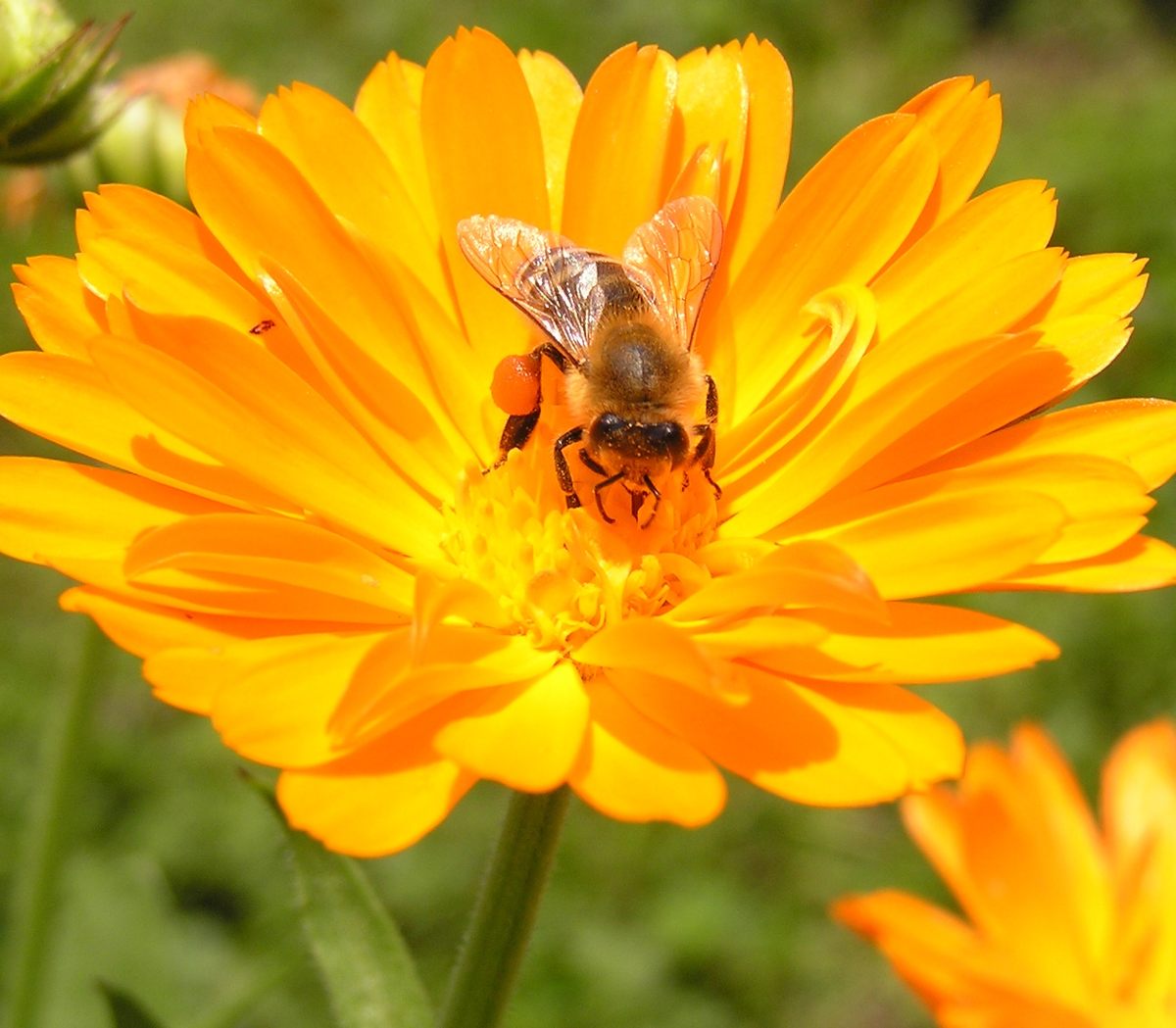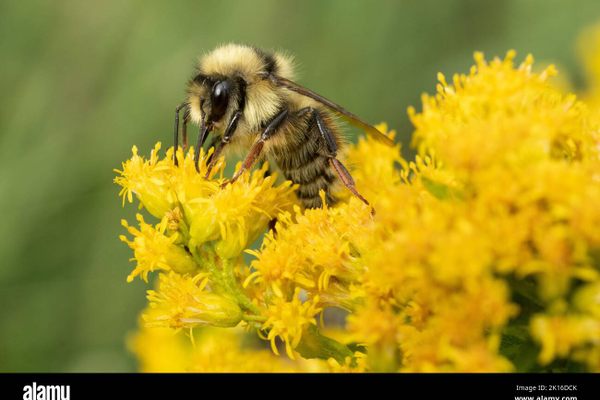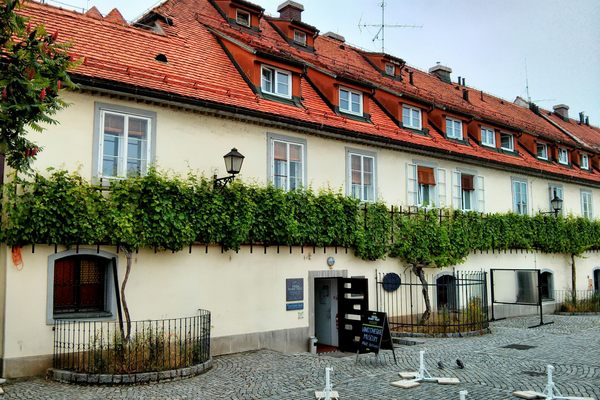Slovenia’s Beautiful Beehives Turn Apiaries Into Art
Dating back to the 18th century, AŽ hive panels depict stories of marriage, damnation, and daily life.
“Slovenia has a strong connection with beekeeping,” says Peter Kozmus, one of the country’s—and the world’s—leading experts on bees. “Historically, every village had at least one beekeeper who produced honey for himself, his relatives, and neighbors.” This tradition continues today, with approximately one in every 200 Slovenians keeping and tending to bee colonies.
Kozmus has been a beekeeper since he was 14 years old. Today, he runs a honey farm in Pilštanj in eastern Slovenia, where he tends to more than 100 bee colonies. He also heads the breeding program for the 8,000-member Slovenian Beekeepers’ Association, a nearly 150-year-old education, research, and training organization.
Drive through the verdant countryside, and you’ll notice hobbit-sized huts, similar in appearance to garden outbuildings or she-sheds. But these small structures aren’t filled with landscaping tools or craft supplies. Instead, they’re apiaries that house unique hives, known as Alberti-Žnideršič (or AŽ) hives. Invented at the turn of the 20th century by beekeeper Anton Žnideršič, the hives—kranjichi in Slovenian—take their name from their inventor whose design was inspired by a leaf hive system by German teacher and beekeeper Adolf Alberti.

Unlike their American counterpart, the Langstroth hive, with its vertical box shape and hanging honeycomb frames, AŽ beehives are smaller and open from the back instead of the top. They also can be stacked together. Their structural design and small size allow them to be incorporated into the walls of the apiaries, providing protection from the elements and making it easier for beekeepers to inspect and manage their colonies. More than 90 percent of beekeepers in Slovenia use AŽ hives.
Like everyone else in Slovenia, Kozmus oversees colonies of native Carniolan honey bees, the only species the country allows beekeepers to tend. Kozmus’s bees are divided between four apiaries outfitted with AŽ hives. A large one near his house serves as the main source of honey production and is used for tourism purposes. Two mobile apiaries can be moved around the property “to find better pastures,” Kozmus explains. And a small house is reserved for nucleus colonies—developing colonies with breeding queens. But there is no standard design for an AŽ hive house. It can be as small or as large as the beekeeper desires and can hold dozens of hives, stacked two or three high.

Typically, the hives are built into the south side of a bee house to capture the sun, while the opposite wall blocks the cold north winds. The eaves should extend about three feet to protect from rain and snow, while the entire house should be raised about four feet off the ground in order to keep the hives dry. Many bee houses are built on wheels, allowing them to be moved around the property as the seasons change.
Inside, the apiaries are a mix of workspace and living room. Depending on their location, they can include heat or air conditioning. Some are large enough to hold the extractor and other machinery needed to process the honey, as well as space for the beekeeper to hang out. “You’ll see a lot of bee houses that have beds or a table and chairs in them,” says Suzanne Brouillette, the owner of Slovenian Beekeeping. Brouillette, a New Hampshire resident, organizes beekeeping-themed trips to Slovenia and is one of the few providers of AŽ hives in the United States. “You’ll go out and take care of the bees, have some bread and wine and cheese, and take a nap,” she says.

A small hole or slit on the front of the hive allows the bees to enter and exit, while the beekeeper accesses the combs from the rear of the hive, which is located inside the apiary. The hives themselves are divided into two chambers. “They’re basically two-story bee apartments,” says Wesley Brittenham, director of horticulture for Los Poblanos, a historic inn and lavender farm in Albuquerque, New Mexico. The property recently built a Slovenian apiary as part of its beekeeping program. “The queen does all the brood rearing and egg laying in the downstairs portion, while upstairs, all the bees can build pure, clean honeycomb,” he explains.
Each weighing about eight pounds, AŽ bee house frames are easy to remove, simply sliding out one at a time like books off a bookshelf. Langstroth hive frames can weigh as much as 40 to 90 pounds and must be lifted up out of the hive. “There are so many benefits to this style of beekeeping,” Brouillette says. “Number one, anyone can do it—children, the elderly, if you’re in a wheelchair. It really opens up beekeeping to everyone.”
But the most memorable aspect of Slovenian bee houses is their colorful appearance. The hives often are painted in bold primary hues and adorned with artistic panels, known as panjske končnice.

The first panels were created in the 18th century. Back then, beekeepers thought they helped the bees navigate to their own hives. “Today, we know that’s not the case, that bees remember the location of the right hive,” Kozmus says. Also, most beekeepers at the time were illiterate and the panels, which were often painted by traveling artists, told stories about their lives.
Brouillette says there are 600 known panel motifs from the 1800s, ranging from the religious to the political to the quotidian. “It was a way of being a little bit more prestigious than your neighbor if you had them,” she says.
About half of the motifs tell stories from the Bible. “The panels were like frescoes in a church,” Brouillette adds. The oldest-known bee panel is from 1758 and depicts the Madonna and Child. There’s Adam and Eve in the Garden of Eden, images of patron saints, and scenes of sinners in Hell.
Secular subject matter includes animals and hunting scenes, caricatures of important figures, and social commentary. There are themes of marriage and funerals, moral tales of drinking and infidelity, important events from history, and amusing looks at daily life.

While the art of hand-painting bee panels faded away after World War I, many beekeepers still use reproduction panels or ones with their own designs. “Beekeepers still paint the fronts of their hives because it’s our tradition and because we want to have beautiful hives,” Kozmus says. “Some apiaries still have such beautifully painted beehive headboards that visitors can watch them like they’re watching TV, because each headboard tells a story.”
When it comes to the story of beekeeping, the future looks uncertain. The prospect of a world without bees is dark: The Beekeepers’ Association warns that “Without bees, there is no life, no diversity, and almost one-third less food production. Which means no future.” But there is hope, as more Slovenian beekeepers continue the historic tradition. Thanks to the group’s educational efforts, the average beekeeper age has decreased from 65 to 59 over the past 15 years in Slovenia.
“In our country, we have mostly small hobby beekeepers for whom beekeeping is a way of life,” Kozmus explains. For Slovenians, he says, tending bees is not viewed as work, but something “that makes their lives better.”
Gastro Obscura covers the world’s most wondrous food and drink.
Sign up for our email, delivered twice a week.




















Follow us on Twitter to get the latest on the world's hidden wonders.
Like us on Facebook to get the latest on the world's hidden wonders.
Follow us on Twitter Like us on Facebook